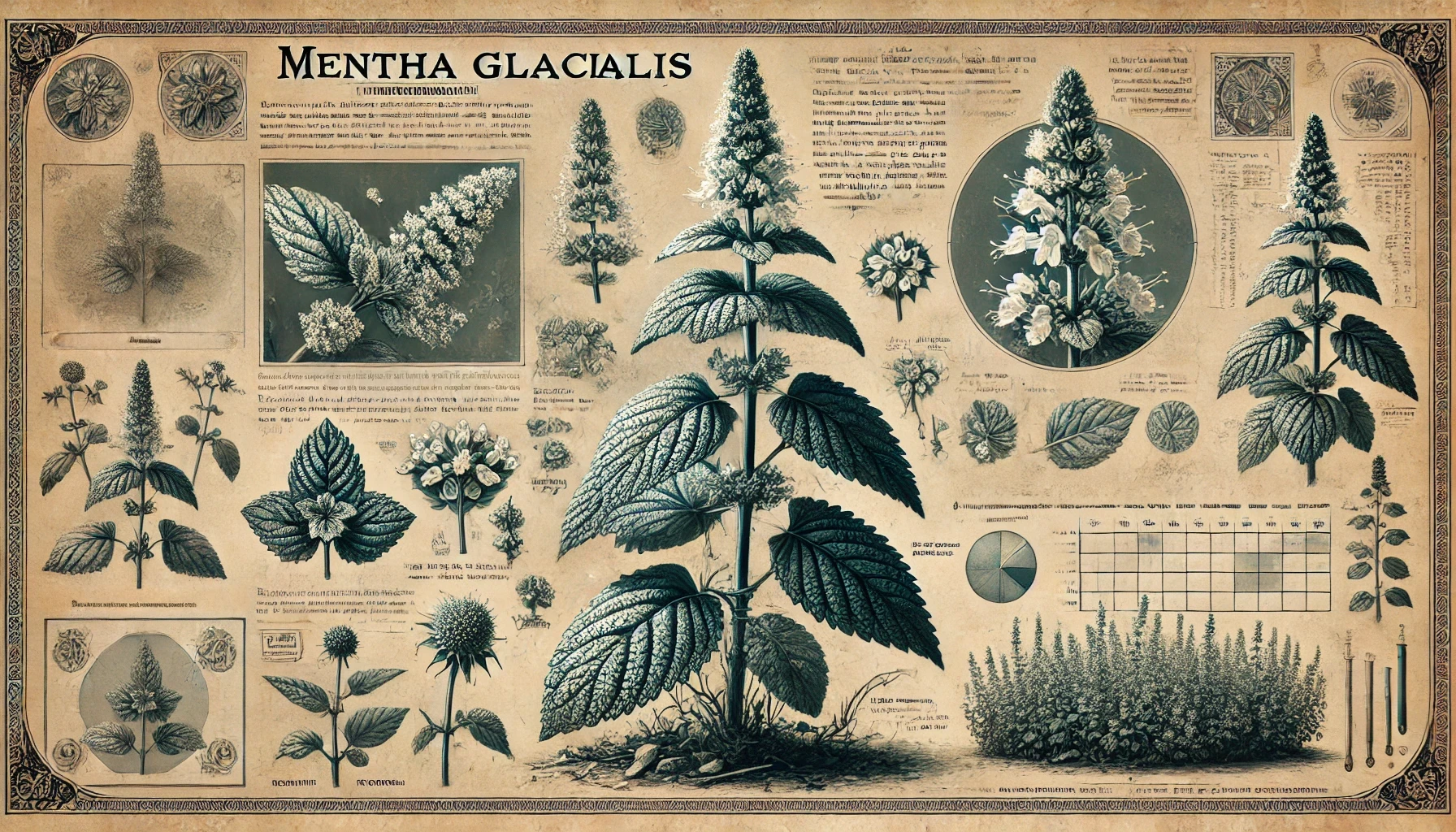Visual Description
Glacial Mint is a dense, low-growing shrub with broad, white-veined leaves that glint with a faint silvery sheen. Under sunlight, the veins seem to sparkle like frost, and brushing the leaves releases a burst of icy vapor from microscopic particles that cling to the plant’s surface. The top of the stems host small, tightly clustered white flowers, each edged with a trace of pale blue. When disturbed, the flowers release delicate flakes resembling snow—visibly cold to the eye, but harmless in small doses.Habitat and Growth
This plant flourishes in coastal highlands, cold meadows, and arctic foothills, often hidden among common mint patches or alpine herbs. Despite its cold affinity, it adapts well to full sun, remaining cool to the touch even at midday. Insects are attracted to its natural chill and subtle glow, pollinating the plant in brief, darting intervals to avoid overexposure to its cooling oils.Alchemical Use and Preparation
The leaves of Glacial Mint are prized in alchemy for their potent and persistent cooling properties. When dried and steeped, they produce tinctures and elixirs that lower body temperature, soothe inflammation, or provide comfort in high-heat environments. Its effects are almost immediate, making it a favored component in fever remedies, post-battle cooldown blends, and suppressants for magical overheating. It is best harvested in the early morning, when dew amplifies the mint’s internal cold. Leaves must be stored in cool, shaded environments, as direct sunlight will dissipate the volatile cooling agents in a matter of hours.Warnings and Curiosities
Due to its strength, overuse of Glacial Mint in medicinal brews can lead to deep internal chilling, especially in humid climates. Symptoms include slowed heartbeat, faintness, and dampened elemental resonance in mages. It is often mistaken for standard wild mint, leading to accidental misbrews with unintended, sometimes dangerous effects. Some field studies suggest the plant reacts negatively to fire-based energy, wilting rapidly if stored near enchanted flames or pyro-infused reagents.Historical Notes and Folklore
Glacial Mint has long been valued in non-magical traditions as a fever remedy or wound soother. Hunters in frostlands would chew the leaves to stave off overheating while pursuing prey, while southern desert scouts learned to use it sparingly in tea to survive day heat. A noted line from a northern healer’s journal reads:“It doesn’t make you cold. It makes you forget how hot you were.”
The Coldglass
In coastal taverns from the storm-washed north to the desert-edge ports of the south, Glacial Mint has earned a place not just in field kits—but behind the bar. Crushed into drinks or infused into cooling syrups, the leaves are used to create the “Coldglass”—a drink that delivers a refreshing chill from the first sip to the last, no matter how warm the air or how sweaty the room. The experience is more than taste—it’s a sensation that crawls across the tongue and down the throat like a breeze off glacier stone. Some bartenders take pride in blending mint tinctures so finely that the cup itself frosts slightly when poured.“You drink it slow. Not because it burns—but because it doesn’t.”Though the quantities used in drinks are safe, many keep a single sprig of uncut Glacial Mint behind the bar—both as a garnish for special orders and as a symbol of hospitality in places where heat makes tempers quick and thirsts long.



Comments